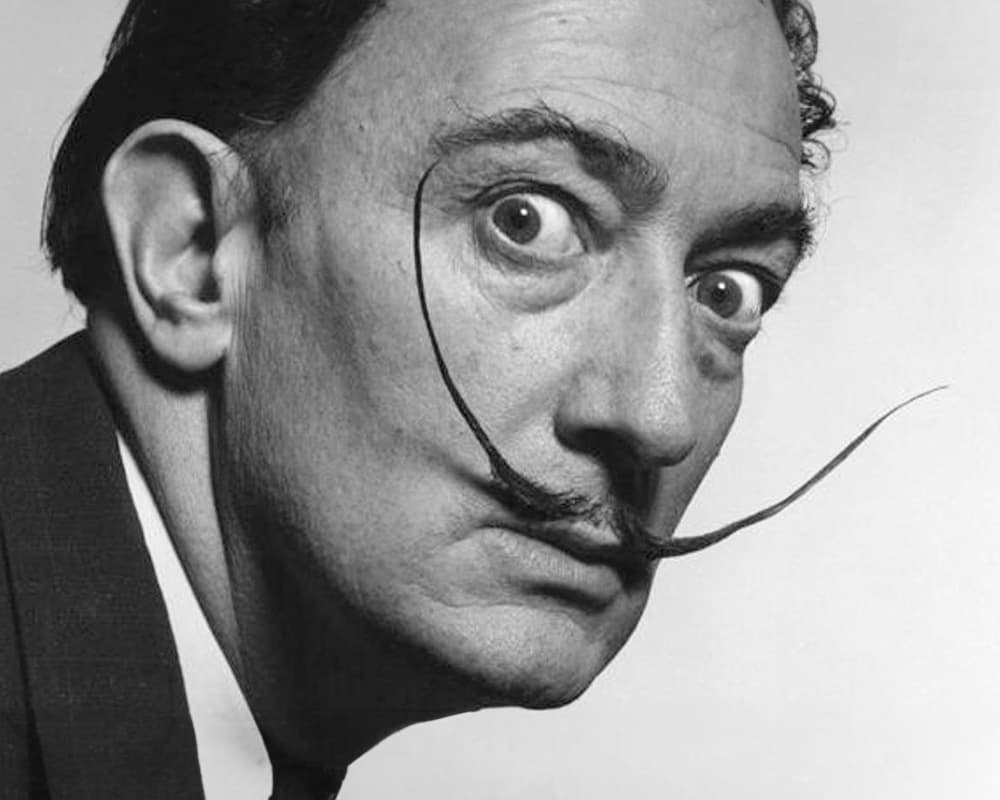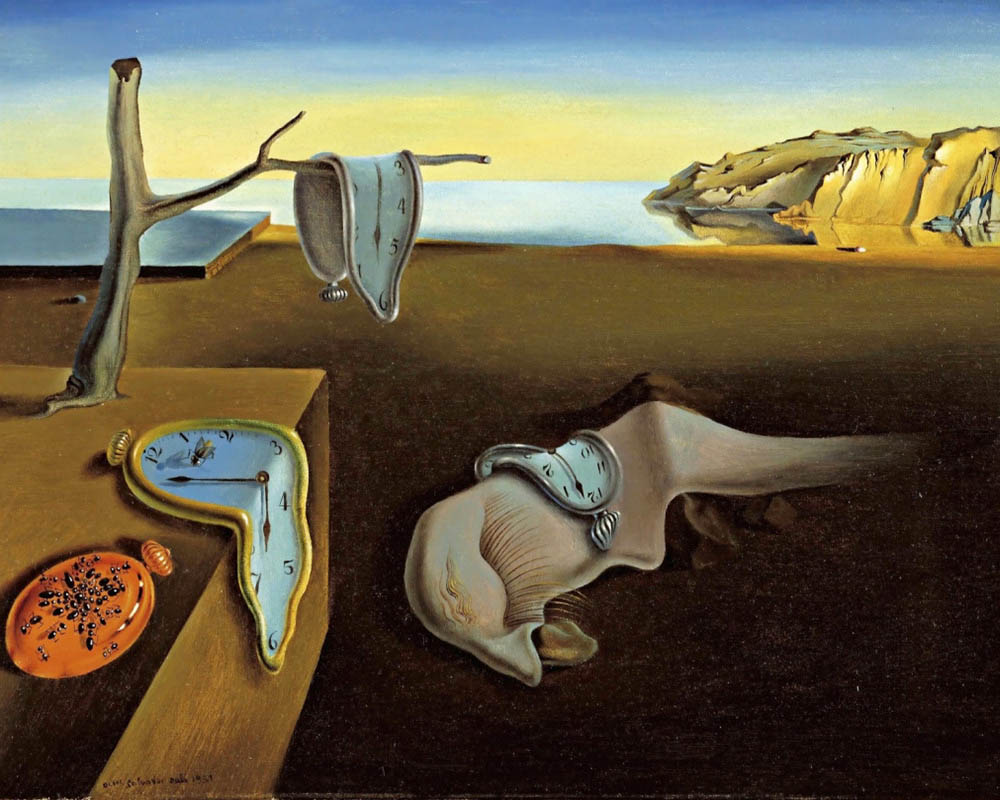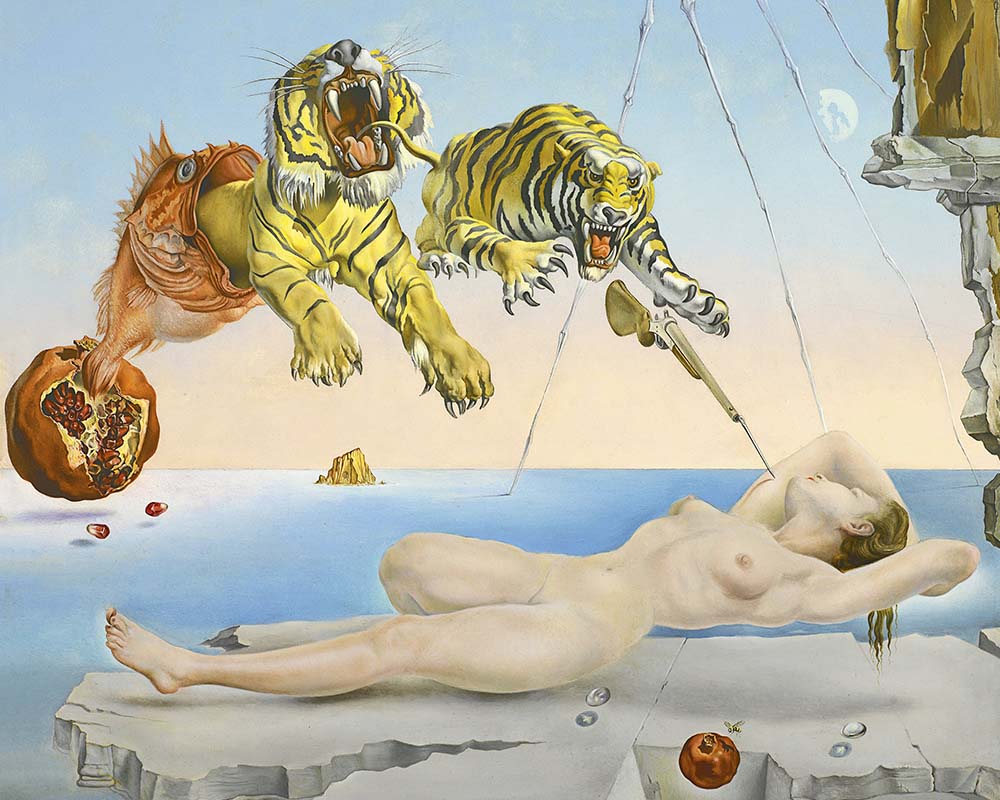The dream world of Salvador Dalí
Immerse yourself in the surreal world of Salvador Dalí, the master of reality and imagination. Explore oneiric landscapes where time and logic are mere suggestions. Join me on the journey through the mesmerizing art of this iconic Master.
share this!

Speaking about influences, I’ve always been drawn to those artists who dare to dance on the edge of reality and imagination. Salvador Dalí, the iconic figure of Surrealism, is the master of this delicate balancing act. His works transport us to oneiric landscapes, where time, space, and logic are mere suggestions. Join me on a journey through the mesmerizing world of Salvador Dalí.
The art of surrealism:
Salvador Dalí was born in Catalonia, Spain, in 1904. From an early age, he displayed a prodigious talent for art, but it was his ability to transcend the confines of the ordinary that set him apart. His artistic journey unfolded like a vivid dream, a journey into the surreal vision of Salador Dali.

A surrealist in his own league:
Surrealism is a movement that thrives on the unexpected, the irrational, and the bizarre. It’s a world where dreams blend with reality, where the subconscious takes center stage. Dalí was the quintessential surrealist, and his art was a direct portal to the depths of his imagination.
A brush with the unconscious:
What I find most intriguing about Dalí’s works is his seamless fusion of reality and fantasy, executed with absolute mastery. His paintings are like waking dreams, where melted clocks, distorted figures, and strange creatures coexist with everyday objects. It’s as if he found a way to make the hidden workings of the mind visible.

The persistence of memory:
One of Dalí’s most famous works, “The Persistence of Memory,” is an embodiment of surrealism. The melting clocks draped over barren landscapes are a symbol of time’s fluidity and the ephemeral nature of reality. It’s a painting that makes us question our understanding of the world.

(Salvador Dali, 1944)
Details and precision:
Dalí’s meticulous attention to detail is a testament to his dedication as an artist. Each brushstroke is deliberate, every element in his paintings placed with purpose. It’s this precision that gives his dreamscapes an almost hyper-real quality.
The eccentric persona:
Dalí wasn’t just known for his art; he was a showman in his own right. His eccentric persona, complete with a flamboyant mustache and a penchant for dramatic gestures, added to the mystique surrounding him. He was a walking, talking work of art.
Legacy of inspiration:
Dalí’s influence on the art world is immeasurable. His ability to paint dreams has left an indelible mark on the creative landscape. He reminds us that art isn’t bound by the laws of the tangible; it’s a gateway to the intangible, the ethereal, and the surreal. His innovative approach has inspired some of my own surreal visions. His visionary ideas are frequently explored in creative thinking books, highlighting how his work transcends traditional boundaries.

I can’t help but admire Dalí’s ability to transport us into a realm where imagination knows no bounds. His dreamlike landscapes are an invitation to explore the recesses of our own minds. Dalí was a maestro of the surreal, an artist who turned dreams into reality on canvas, walls and even some amazing pieces of jewellery. His legacy continues inspiring and reminding us that, in the world of art, dreams are worth chasing.
